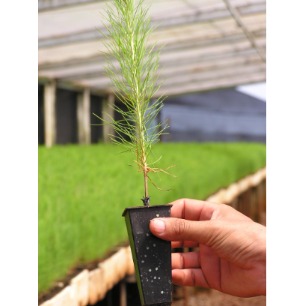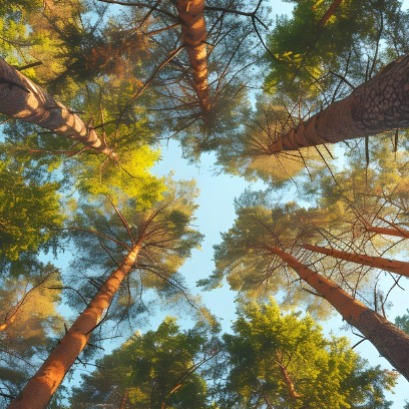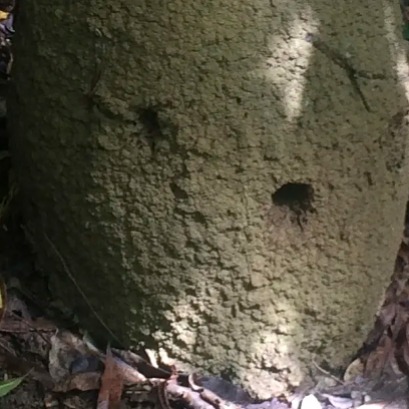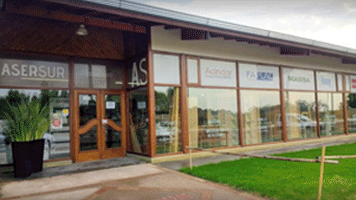
The 2025 Rural Expo will be the scene of a key day for the development of forest-industry and its link with carbon markets
Under the motto Business for an Argentine that grows: Foresto-Industria and Carbon Markets, the meeting will be held on Thursday, July 24, from 3:00 p.m. to 16:30, in the auditorium of the Argentine Rural Society (SRA), located in Juncal 4450, first floor, in the city of Buenos Aires.
Organized by the Forestation Commission of the MRS, the event will feature specialists from the sector, officials and referents of the legal and business scope. The day will address the current state of forest-industry in the country, the regulatory challenges and the potential of Argentina to position themselves as an international provider of carbon credits. Among the speakers are: ? Sabrina Vetter, National Director of Forest Development. Industrial, who will expose on the current panorama of the sector and the new markets ? Federico Moyano, Executive Director of Prosustentia, will present the different types of carbon projects and the operation of the markets ? Juan Pedro Cano, coordinator of the Argentine Carbon Table, will share the development plan of the agricultural and forestry carbon sector ? Manuel Fravega, of the Beccar Varela study, will explain the legal frameworks and the project of law that seeks to regulate the generation of carbon credits in the country. The event will end with a tour of the 137th Exhibition of Livestock, Agriculture and International Industry, which takes place from July 17 to 27 at the Fairground of the Rural of Palermo. This year, the motto of the sample is I felt the tradition, I lived the future, reflecting the balance between the productive roots of the country and the technological innovations of the agriculture. Institutional presentation and immersive technology The Argentine forest-industrial council (trust) participates in the rural expo within the stand of the Ministry of Economy of the Nation, as part of a strategy of visibility of the activity and its impact on regional economies. They reported from the Council-integrated by Afoa, Faima, Asora, AFCP and Mrs. itself-the space will have 3D viewers to offer an immersive experience about the forest-industrial production chain, as well as the delivery of pine seedlings and didactic materials for the public. In addition, they accompany the Undersecretariat of Agricultural and Forestry Production in the dissemination of the different stages of the forest process, from the plantation to the industrial transformation.
IT MAY INTEREST YOU
 The Argentine tree that begins its life on top and not on the ground: a wonder of the world
The Argentine tree that begins its life on top and not on the ground: a wonder of the world
In Argentina, an extraordinary and unique tree grows in the world, known by a characteristic as unusual as fascinating: it is not born on the ground, but on other trees. It is a species originally from the Argentine northeast that develops as an epiphyte in its early stages of life. This behavior allows you to settle at the top of the forest before extending its roots to the ground. Present in the provinces of Misiones, Corrientes, Entre Ríos and the north of Buenos Aires, this tree is part of the riverside forests and the jungles in gallery. Admired for its form of growth and its relationship with other species, it fulfills a key ecological role in the coastal ecosystems, offering food and shelter to birds, insects and small mammals. The Higuerón is a tree that begins its life on the branches of another tree, where its seeds germinate, generally transported by frugivorous birds. From there, it develops aerial roots that grow towards the ground, looking for nutrients and water. As these roots swell, they can completely wrap the host tree, a phenomenon that has given rise to the popular name of strangulator (although it does not always kill the tree that sustains it). It can reach up to 15 meters high, and is characterized by having coriacea leaves, small fruits similar to figs, and a white latex that acts as a defense against insects. Its flowers are so small that they can only be observed with magnifying glass and are contained within the fruit. In addition, its wood has been used limitedly in light carpentry and its cortex has medicinal properties recognized in traditional medicine. This tree not only surprises with its biology, but also for its value in the regeneration of the forest and its ability to colonize cracks of old walls and walls, even in urban areas. Trees that grow unusually: where do they come from? According to botanists and ecologists, there are other trees in the world that, such as the Higuerón, have out of the common growth: ? Higuerón (Ficus Luschnathian - Argentina and Brazil): Epiphyte tree that develops aerial roots from the top to the ground. ? Ficus Benghalensis (India): known as Baniano, its aerial roots form true forests from a single copy. ? Ficus aurea (Central America): Typical strangulative tree, with development similar to Higuerón. ? Ceiba Pentandra (Amazonas): develops huge buttresses to hold its height in shallow soils. ? Tabaquillo (Polylepis Australis - Argentina): Grows in High Mountain and its cortex follows in fine layers as paper. ? The Argentine Higueron is a true botanical rarity. Its way of life begins suspended in the air and ends rooted on earth, connecting the sky with the ground. Because of its structural beauty, its contribution to biodiversity and its surprising way of growing, it is one of the most curious and admirable trees of the Forests of the Northeast Argentine.
 He is the most resistant wood producer in the world and grows in Argentina: he knows the tree that surprises with its properties
He is the most resistant wood producer in the world and grows in Argentina: he knows the tree that surprises with its properties
? In the north, one of the oldest and most resistant trees on the planet survives. ? Its name is Guayacán and has medicinal properties, in addition to an amazing wood.
 Termites to save the tropical jungles of Australia: People thought it was enough with planting trees
Termites to save the tropical jungles of Australia: People thought it was enough with planting trees
They are essential for nutrient recycling and are associated with nitrogen -fixing bacteria, vital for the functioning of famous trees due to their ability to destroy wood, no one would think of recovering the tropical jungles planting termites nests. Well, precisely, because no one had occurred to him, some of Australias reforestation projects were sentenced to failure.





















